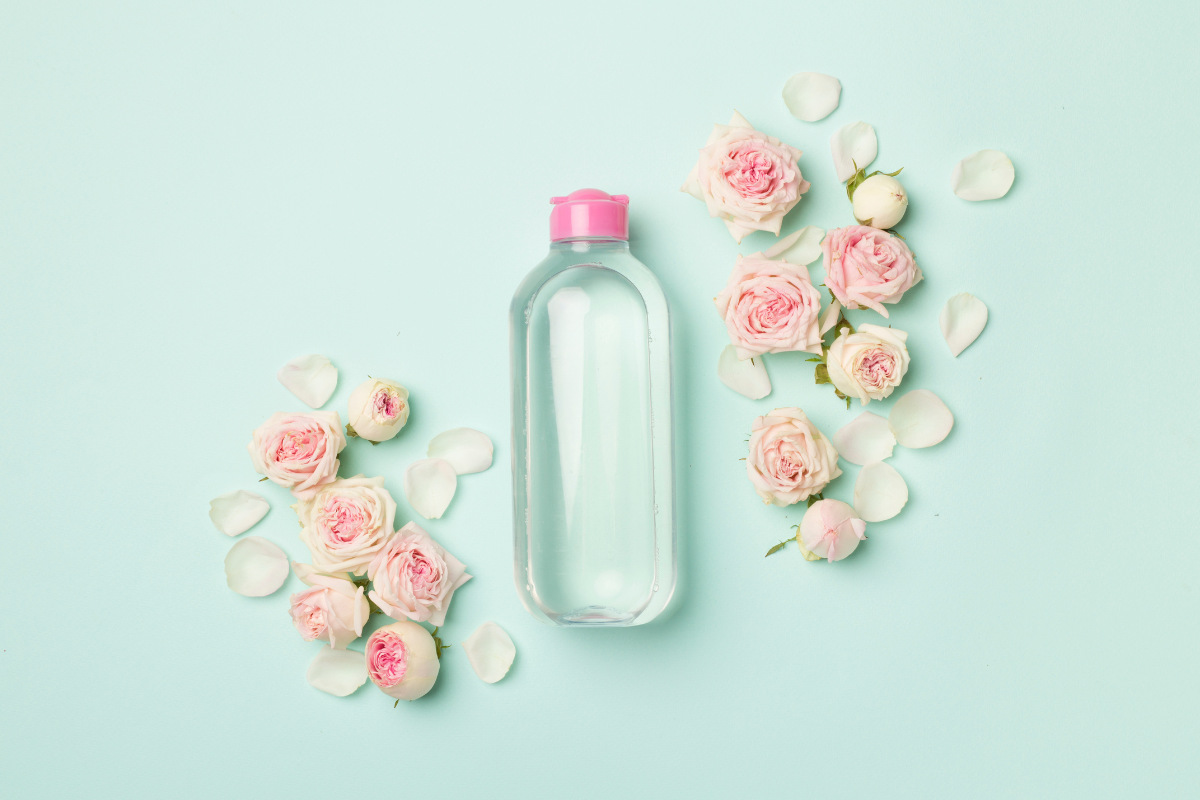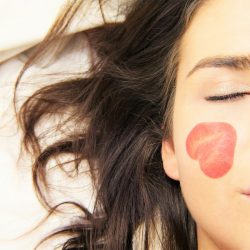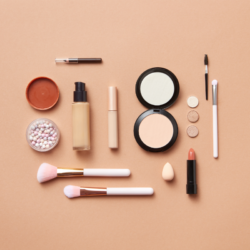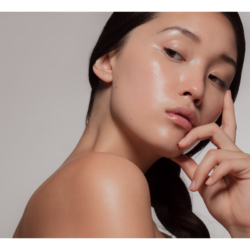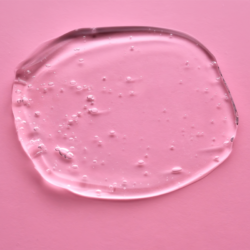Micellar water has become a must-have for removing make-up and cleansing the face. Thanks to its gentle, effective formula, it attracts impurities and excess sebum like a magnet. But how exactly does it work? What are its benefits? Does it need rinsing after use? And above all, how do you choose the right micellar water for your skin type? Find out everything you need to know about using this facial cleanser and optimising your beauty routine.
What is micellar water and how does it work?
Micellar water is made up specifically of particles that work like magnets to capture oil and dirt from facial skin, while respecting the natural protective layer of the dermis. That’s why it’s the perfect facial cleanser, and also removes make-up.
The benefits of micellar water: why use it?
- It’s a hypoallergenic product with no alcohol or fragrances, so it won’t cause irritation.
- It has a soothing and purifying effect on the skin.
- Micellar water removes long-lasting make-up
- You don’t have to press down to apply it, or rinse it off.
- It saves money because it’s a 2-in-1 facial cleanser.
Micellar water takes its name from micelles. These are small, round cleansing balls made up of molecules that float in water. When you apply micellar water to your skin, the cleansing agents come into contact with the oil and dirt on your face, forming micelles and removing the dirt quickly and effectively.
And that’s what makes micellar make-up removal water so special: combining the freshness of an aqueous solution with the effectiveness of make-up removal oil. Its soap-free formula, which often contains no fragrance or emulsifiers, maintains a balanced pH. This gentleness in no way diminishes its cleansing power. Easy, gentle make-up removal with no need to rinse.
Soothing, micellar water is often appreciated by women looking for a gentle make-up remover: ideal for all skin types, it is particularly suitable for sensitive skin. Fresh and lightly foaming, it is nonetheless effective at removing make-up – even stubborn make-up – as well as grease, impurities and traces of pollution. For the comfort of optimal, gentle cleansing. There’s no tingling or tightness when you apply the face care product, and the micellar water is powerful enough to remove eye make-up, so there’s no need for another make-up remover.
How do you choose your micellar water according to your skin type?
For normal skin :
If your skin doesn’t appear to be particularly oily, and is resistant to most ingredients, you can choose any type of micellar water! Your skin can be considered normal. This facial care product will maintain the balance of your skin, cleansing it and removing make-up with ease. Your skin will be nourished and moisturised.
If you have dry skin :
A classic make-up remover can accentuate your dry skin. Fortunately, there are micellar waters such as H2O TS micellar water from Bioderma which, as well as having make-up-removing properties, are combined with other ingredients to moisturise and soothe the skin in order to keep it hydrated
For oily skin :
If you have skin that shines quickly, whether it’s just on your forehead, nose, chin or anywhere else, your aim is to regulate excess sebum. As well as removing make-up, micellar water will mattify your skin, leaving it soft, smooth and shine-free. By using a formula that can help reduce excess sebum, you’ll help your skin fight and prevent imperfections while gently cleansing your skin and removing the day’s make-up and dirt
For fragile skin :
If your skin tends to be very reactive, you’ll need to look at two things before choosing your micellar water: the formulation needs to be fragrance-free, and there needs to be no rubbing – the micellar water will leave your skin feeling soft and soothed after cleansing. By using an effective formula, make-up removal will be easier, and you’ll minimise the risk of irritating your skin.
How can you incorporate micellar water into your daily routine?
Here are the right steps to take for healthy skin:
-
In the morning to wake up and tone your skin:
It’s essential to cleanse your face at the start of the day, to get rid of the impurities released by the epidermis during the night (sebum, pollution, toxins, etc.). Without cleansing, pores become clogged, your skin looks less clear, your complexion duller, and imperfections can appear. With micellar water, your complexion glows naturally as your skin breathes.
-
Careful application:
Leave the micellar water on for a few moments to allow the surfactants to work and dissolve impurities. Use a soft cotton pad and gently massage the entire face in circular movements, not forgetting the lips and eyes. There’s no need to rub, just keep going until the cotton pad is spotless.
-
Use in the evening to gently remove make-up and cleanse your skin:
Make-up removal and/or cleansing are still essential. Cleansing before you go to bed allows your skin to regenerate while you sleep, and therefore to be purified. Make-up, simple creams, pollution, etc. These are all aggressors that stick to the epidermis and prevent it from renewing itself. Reactive skin, a feeling of tightness or dryness, imperfections such as blackheads, a blurred complexion… these are all signs of cellular dysfunction that you can prevent by eliminating these impurities – thanks to micellar water.
-
Each area of the face has its own specific characteristics:
The eyes are often an area to focus on, requiring deep make-up removal (especially if you use waterproof mascara and eye shadow) but also a fragile and delicate area. So rather than scrubbing with harsh products, micellar water is the ideal ally for powerful yet gentle make-up removal, and helps to relieve congestion in these sensitive areas.
-
Toning:
Micellar water doesn’t require rinsing, but if you want to reinforce its action, tighten your pores and invigorate your skin, don’t hesitate to continue your ritual by applying a toner, such as a floral water.
Is it necessary to rinse micellar water after application?
Micellar water was designed to be used without rinsing, but the question of whether or not its residue should be left on the skin is open to debate. Some dermatologists believe that it can be used without rinsing, particularly for sensitive skin, as it avoids the hard water that can cause irritation. In addition, certain formulations enriched with moisturising agents help to maintain the skin’s balance.
However, other research indicates that even mild surfactants can leave a film on the skin and disrupt its hydrolipidic film. Light rinsing may be recommended, particularly for oily or acne-prone skin, to avoid the build-up of residues that can clog pores. Sensitive or atopic skin may also be better able to tolerate a light rinse with warm water or a thermal water mist.
The choice therefore depends on the type of skin and the formulation of the micellar water. Normal to dry skin can generally do without rinsing, while oily or reactive skin may prefer to rinse to limit the risk of irritation. In all cases, it is advisable to opt for certified organic micellar water to limit the risk of allergy and preserve the skin’s natural balance.
Read more:
- Talleu, L. (2020). L’acné de la femme adulte et conseils à l’officine. Doctoral thesis in pharmacy, University of Lille.
- Battu, C. (2019). Early management of skin toxicities in oncology through dedicated hygiene and care. Actualités Pharmaceutiques, 58(593), 48-50.
- Seuve, É., Eyraud, A., & Desmoulière, A. (2023). Management of psoriatic patients in pharmacies. Actualités Pharmaceutiques, 62(687), 48-52.

